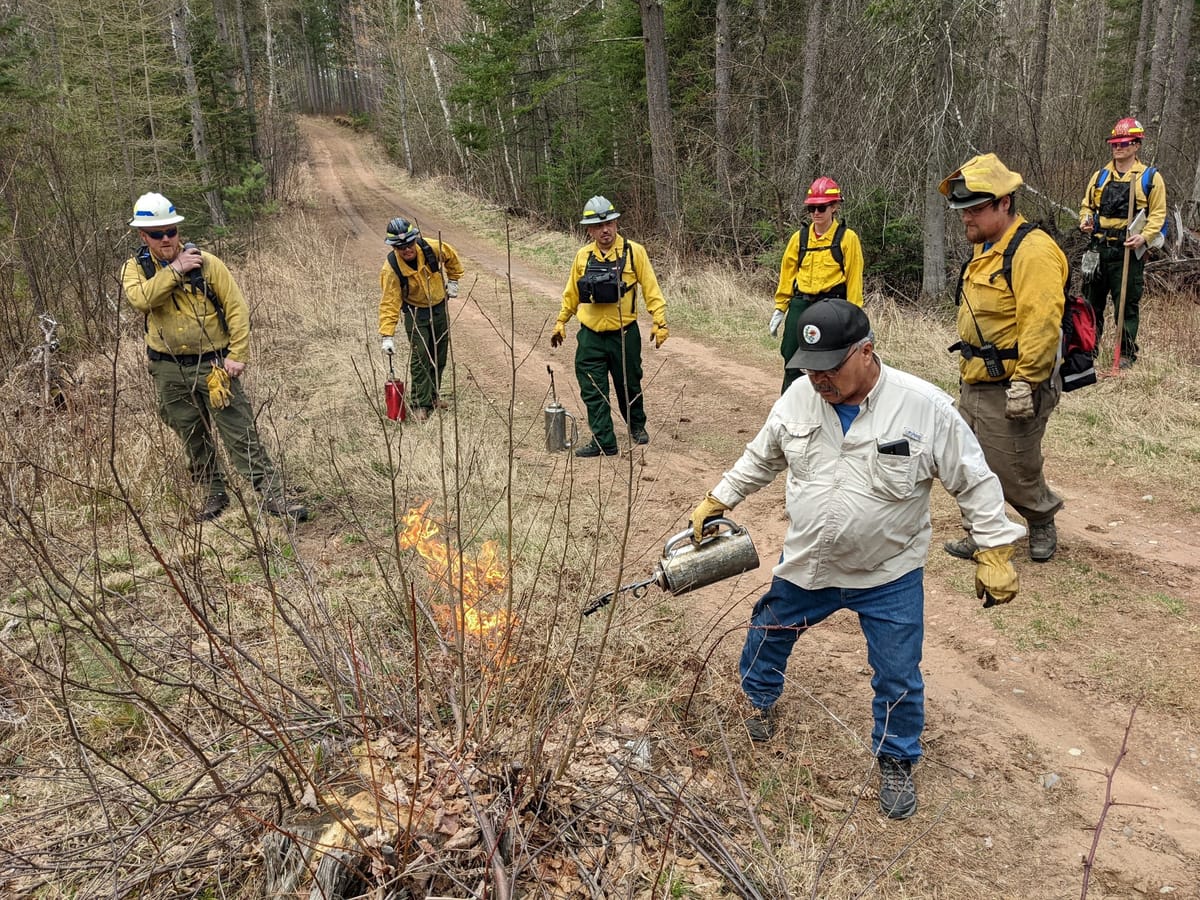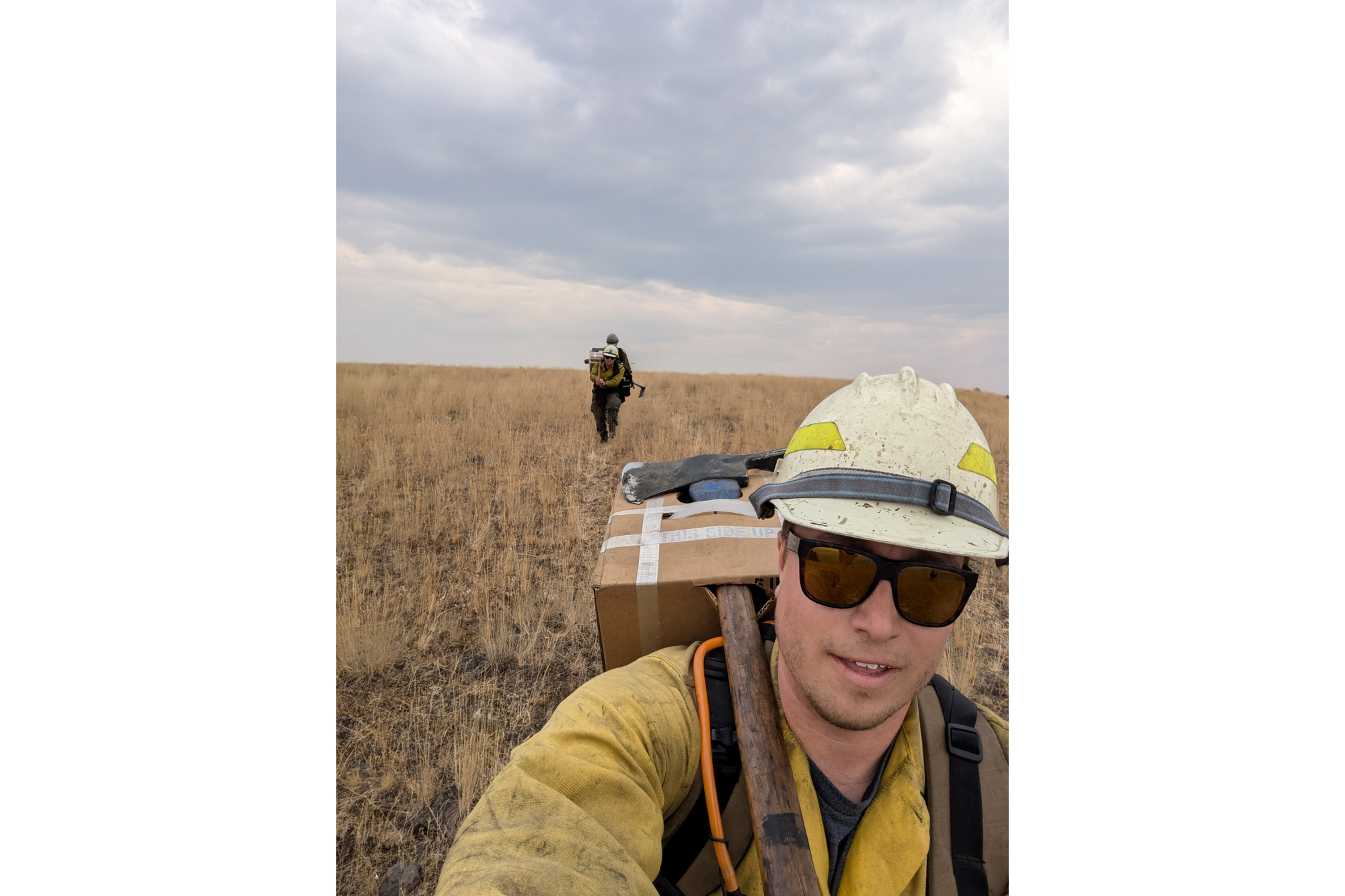On the front line with a Minnesota wildland firefighter
Nathan Myers gives an inside look at what it's like to be a wildland firefighter in northern Minnesota and across the U.S.

What does it take to become a wildland firefighter? Love for the outdoors, a willingness to run toward the flames, and the knowledge of how to extinguish them.
Nathan Myers, a 29-year-old forestry technician, helped break down the intricacies of being a wildland firefighter in northern Minnesota and across the United States for Project Optimist.
Born and raised in Duluth, Myers grew up playing outside, so he had a genuine interest in activities such as camping, fishing, and downhill skiing.
Shortly after he graduated from the University of Minnesota Duluth with a bachelor’s degree in biology, Myers enrolled in a 10-month volunteer program at the Minnesota Conservation Corps (MCC), a nonprofit that works closely with the Minnesota Department of Natural Resources (DNR). During Myers’ tenure at MCC, he assisted the DNR with prescribed burns and wildfire responses, in addition to learning about wildfire management, herbicide application, and how to use a chainsaw.
“I’ve always enjoyed being outside, and my time at Minnesota Conservation Corps magnified my love for the outdoors," he said. "It also made me realize how much I hate working inside, so I wanted to experience a career that would put me outside for a majority of the time."
Afterwards, Myers worked one summer with the DNR as a part-time forest firefighter, a job that was contingent upon high temperatures and dry conditions to create prescribed burns. He had to complete two courses to become a wildland firefighter.

The day-to-day
In his current role with the U.S. Forest Service, Myers works six months per year, plus overtime. He takes intermittent breaks during the late spring to early summer, especially if the season isn’t as dry or temperatures aren’t as high. In total, Myers has six years of wildland firefighting experience.
His crew's home base is Ely, where they basically cover the entire Superior National Forest — 3 million acres of trees, lakes, and rock that a variety of plants, fish, and wildlife species call home.
Myers works with a helitack crew — a group of firefighters who respond to wildfires via helicopter, traveling with up to 120 pounds of equipment in their packs. The firefighters assess how to handle each blaze based on its size and the surrounding temperature that day.
Over the course of his career, Myers estimates he has fought a combined 50-60 wildfires and prescribed burns. Compared to their unpredictable wildfire counterparts, prescribed burns are meticulously planned, Myers said. Each prescribed burn includes a step-by-step plan that outlines the goals for the burn, the weather conditions, and the plan to contain it, for example.
“Essentially, we light a fire to achieve one of two goals or both goals – reduction of hazardous fuels to prevent actual wildfires or use prescribed burns to kill off a certain invasive species that isn’t fire tolerant,” Myers said.

On average, Myers spends three to four months traveling for work because all regions have their wildfire seasons.
Climate change has contributed to wildfire seasons being longer, something wildland firefighters are noticing on the ground.
“Climate change is definitely a hot topic in the fire world, and I do feel like conversations about our fire seasons getting longer are common, especially with fires burning in months that are traditionally known to have low fire activity,” Myers said.

The focus during the spring, however, was on prescribed burns.
“This spring, 98% of our work has been supporting in prescribed burnings, which we can either approach on the ground by holding the fire to make sure it stays within bounds, or devices we can install on the helicopter to help light those prescribed burns from the air if they’re too big to light on the ground,” Myers said. “Later in the season, a lot of our work transitions into suppressing actual wildfires anywhere in the Midwest or the country.”
Filling the gaps
There are more than 11,300 wildland firefighters at work in the U.S., according to the Forest Service website. And while the agency met its hiring goals for 2024, officials are still in search of more workers to fill a shortage. There were 72 job postings for wildland firefighters on usajobs.gov as of Sept. 23.
"We struggle to hire and retain firefighters in areas of the country where the labor pool is low and pay isn’t as competitive as we would like," a statement on the website said.
Sign up for Project Optimist's newsletter
Solution-focused news, local art, community conversations
It's free. No spam. Unsubscribe anytime.
For Myers and his colleagues, the shortage means they are asked to step in when help is needed.
"(The) shortage of firefighters is most noticeable during this time of year
when I know a lot of us are receiving calls and texts fairly
constantly to see if we're able to go help fill out numbers and roles
on other crews," Myers said via email in August.
Despite the long hours, Myers knows his work is important.
“The most gratifying part about the job is our ability to make a difference every time we go out there,” Myers said. “Whether it’s as simple as clearing the road after a storm, or something as complex as prescribed fires, it feels good to help our environment.”
TO LEARN MORE
Visit the Firewise USA website to learn more about wildfire prevention.
Visit the Forest Service website to learn more about careers in wildland fire.
This story was edited and fact-checked by Jen Zettel-Vandenhouten.
